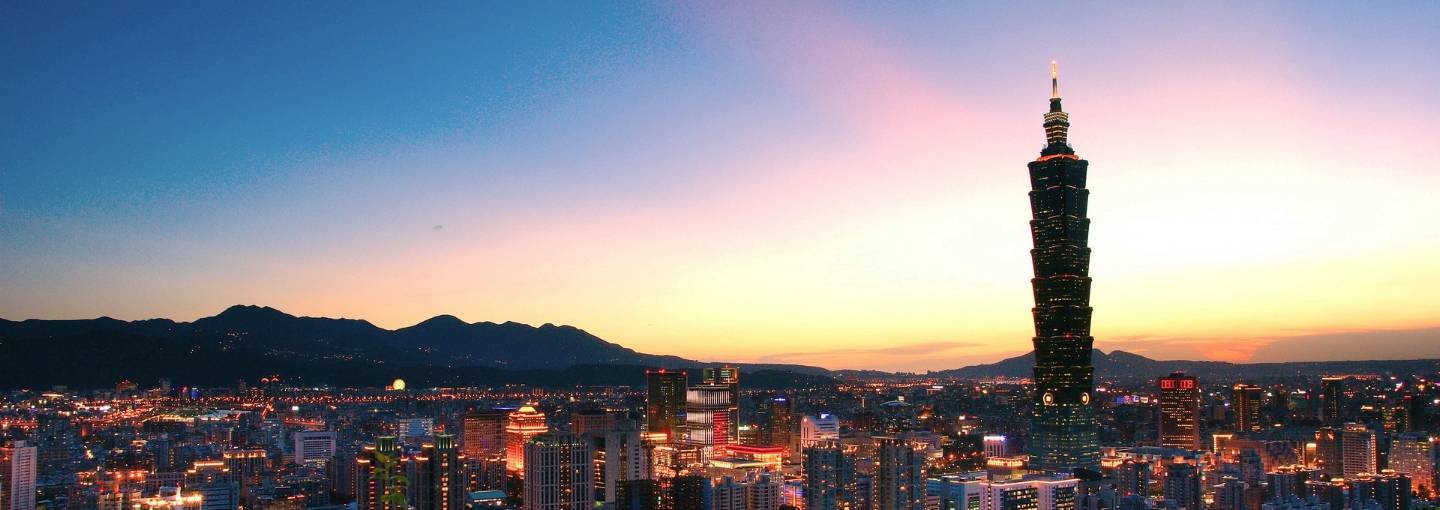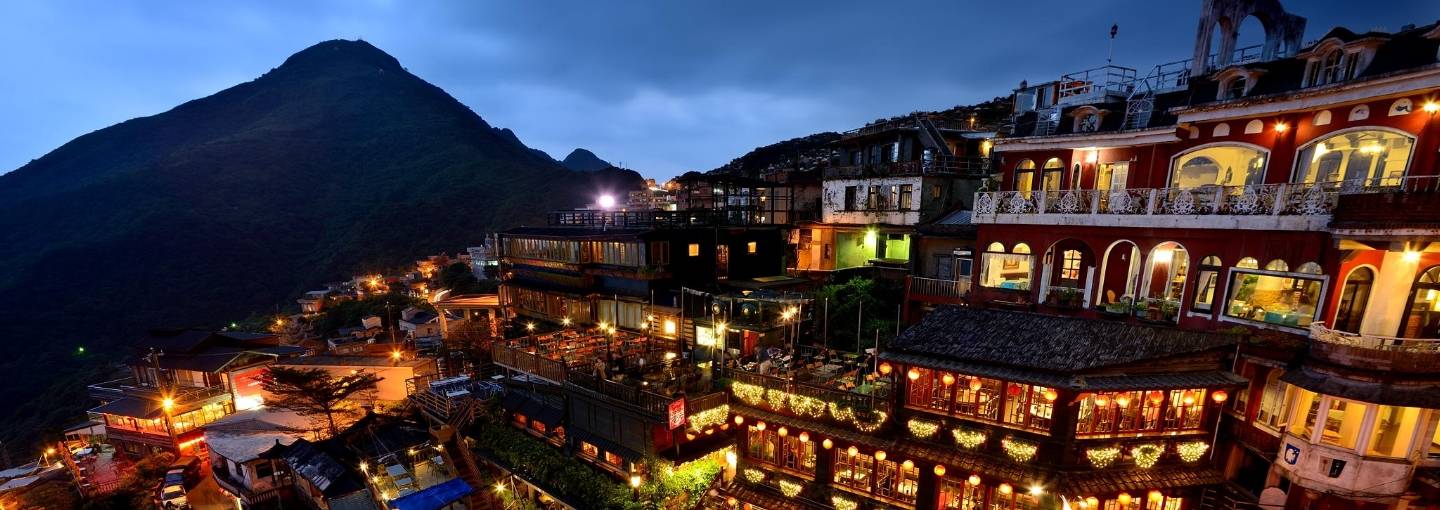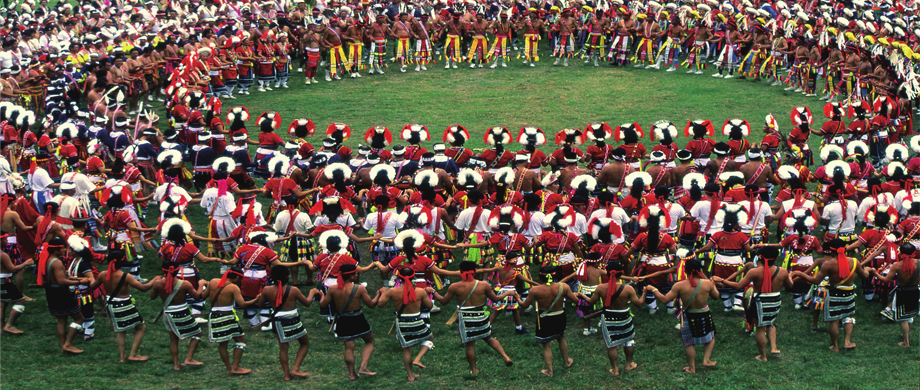Indigenous Ceremonies
The mysterious customs and traditions of the indigenous tribes, Taiwan's indigenous people, such as the Harvest Festival (Smatto), the Worship of Hunting (Mabuasu), spiritual rituals, totemism, and snake worship, give an extra dimension to Taiwan's culture. The indigenous tribes of Taiwan form the most northern branch of the Austronesia language group, and ethnically belong to the Malay race. Most indigenous tribes have retreated into the mountains; but although many are faced with assimilation, still some 16 different tribes that have their own languages, traditions, and tribal structure can be distinguished: the Amis, the Atayal, the Paiwan, the Bunun, the Puyuma, the Rukai, the Tsou, the Saisiyat, Yami, the Thao, the Kavalan, the Truku, the Sakizaya, the Sediq, the Kanakanavu and the Hla'alua.
Mayasvi Ceremony of the Tsou tribe
The Mayasvi is the holiest of all the religious ceremonies of the Tsou tribe. In the early years, it was held before a battle or hunt; today, it is held annually in February and is alternately organized by the communities of Dabang and Tefuye in Chiayi County. The ceremony is held at the tribal gathering house for men (Kupah).
The tribe's war ceremony includes the rites of triumph, rites for the heads of the enemies, and welcoming rites for the gods.
The Ear-shooting Festival of Bunun tribe
The Ear-shooting Festival is the most important celebration of the Bunun people. Held at from the end of the April and to the beginning of the May, the celebration is divided into sowing rites, hunting rites, and ear-shooting rites; pig roasting, apportioning the meat, and storing the meat; work celebrations, witch inductions, and other major activities.
The traditional ear-shooting ceremony starts well before the celebration itself when the young men of the tribe go into the mountains and hunt. Then they cut off the ears of their kills, sticking the ears on a pole or a tree branch for the village men to shoot with arrows. Little children, accompanied by their fathers and older brothers, also practice shooting arrows, hoping that this will enable them to become good hunters.
Flying Fish Festival of the Yami (Tao) tribe
The lives of the Yami (sometimes called Tao) people are closely intertwined with the Flying Fish Festival. Each year the flying fish come with the Kuroshio Current from January to June, and this brings a rich harvest of fish for the Yami living on Orchid Island. That is why the tribe's people believe that these fish are gifts from the gods, and why they treasure this natural resource. Some of the tribe's social customs and taboos are also closely associated with the coming and going of the flying fish.
The Flying Fish Festival consists of ceremonies that begin in the second or third month of the lunar calendar and run for approximately four months. The festival is divided into different parts, including the blessing of the boats, praying for a bountiful catch, summoning the fish, first-fishing night ceremony, fish storing ceremony, and fishing cessation ceremony. The men of the tribe wear loincloths, silver helmets, and gold strips, and face the sea to pray for a bountiful catch. Participation is restricted to men.
Harvest Festival of the Amis tribe
The Harvest Festival is the largest festival of the Amis tribe. Different villages hold separate festivals during July and August; the festival has three stages, including welcoming the spirits, feasting the spirits, and sending the spirits off. In modern times, the ceremony has been shortened and the religious ceremonies simplified. Several activities have been added, including a race, tug-of-war, and arrow shooting competition. The festivities, once limited to tribal participation, are now open to the general public.
Sacrifice to the Short Spirits Saisiat tribe
The Sacrifice to the Short Spirits is the most important traditional rite of the Saisiyat tribe, with a smaller ceremony every two years and a large one every 10 years. The festival is held around the 15th day of the 10th lunar month, at the end of the harvest season, and lasts for four days and three nights.
The first day of the festival starts with welcoming of the spirits, when tribal elders offer wine and meat and then, facing to the east, pray to welcome the Short Spirits. The second day is for entertaining the spirits, which is the centerpiece of the entire festival. The tribe's people engage in festivities and dancing to commemorate the Short Spirits. On the last day, rites for sending off the spirits off are performed. At the appropriate time, the tribes throw sheaves of grass and hazelwood sticks toward the east, signifying that the Short Spirits have already departed. After that, the rice wine, pork, and rice cakes that were offered to the spirits are given to the participants, bringing the festival to an end.
New Year Ritual of the Puyuma tribe
The Monkey Ceremony and Hunting Ceremony are together referred to as the Annual Festival of the Puyuma tribe.
The Puyuma were traditionally the most warlike of Taiwan's indigenous peoples. Every year toward the end of December, the tribe holds the Monkey Ceremony, a unique ritual that serves as a rite of passage that marks the entry of tribal boys into adulthood. Many call it the Monkey Piercing Ceremony as young men of the tribe go through a series of strict trials, the most important of which is the piercing of a monkey (today, the monkey is made of straw) with a bamboo staff. This is thought to build courage and cooperation among the young people. Participants have to complete four levels of trials, after which they are allowed to take part in the hunting ceremony. This requires a young boy to be able to hunt down a wild animal within five days. After this, the young boy is considered a man eligible for marriage.













